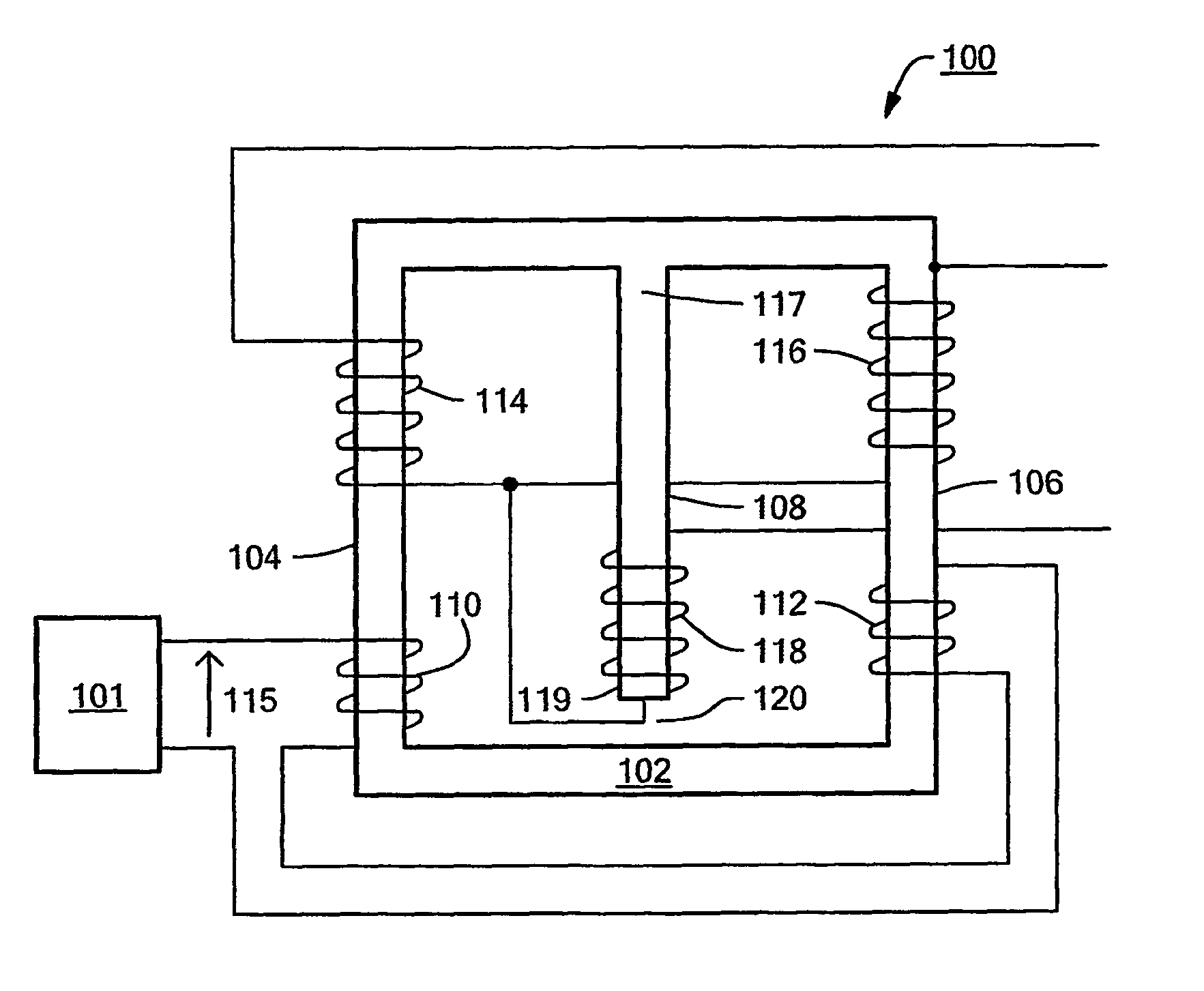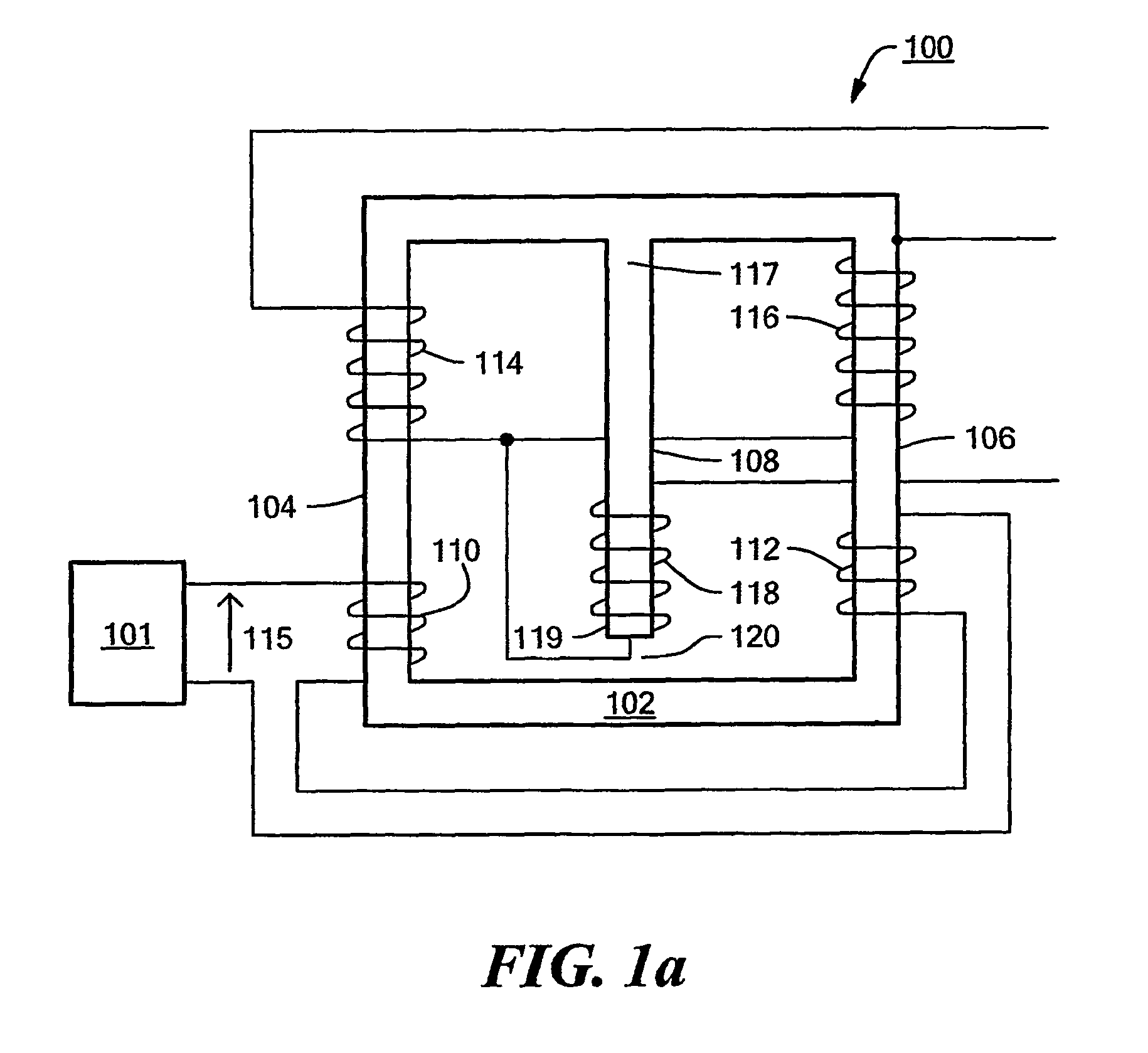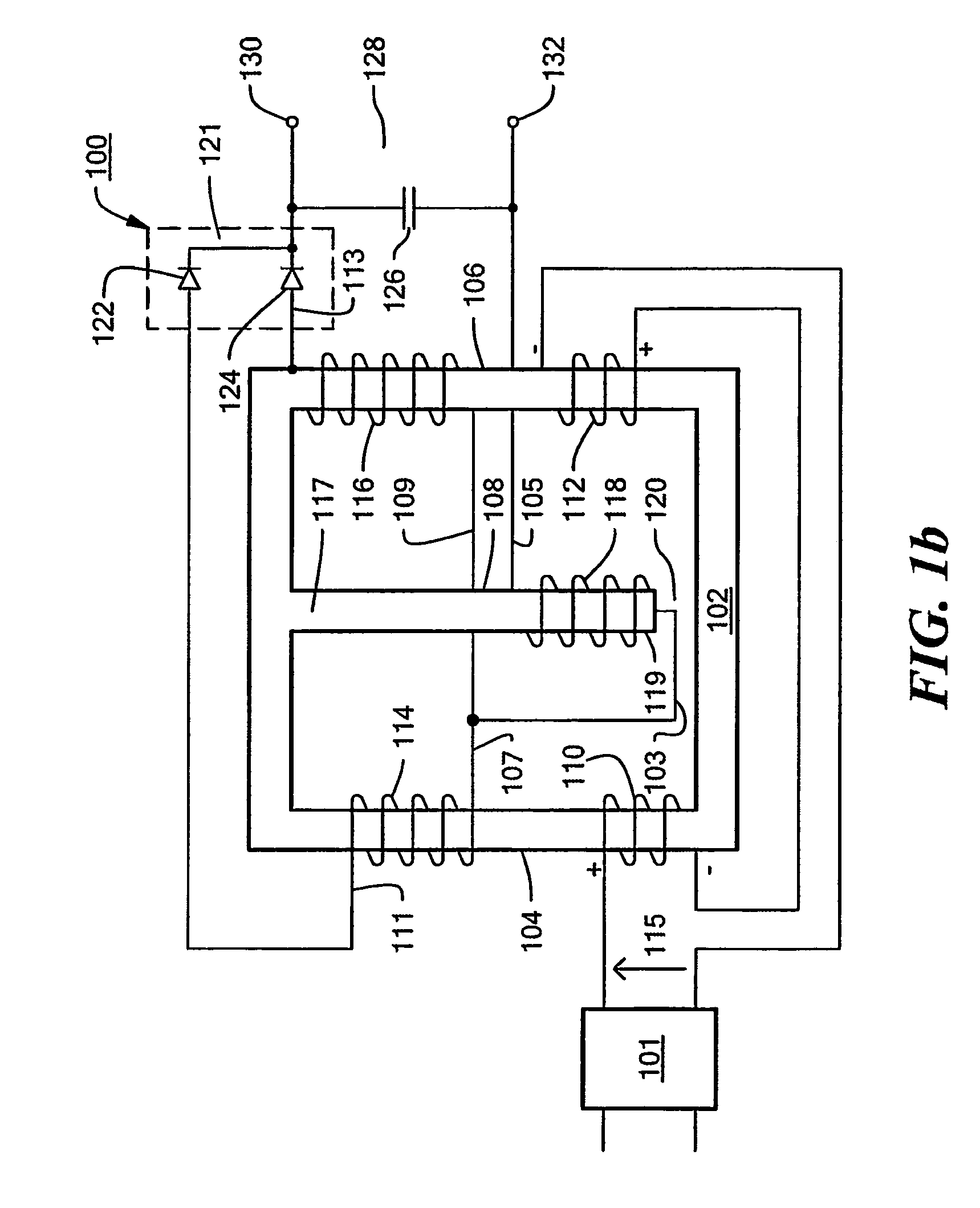Integrated magnetics for a DC-DC converter with flexible output inductor
a technology of integrated magnetics and dc converters, which is applied in the direction of electric variable regulation, process and machine control, instruments, etc., can solve the problems of affecting the efficiency and reliability of the converter, the inability of the transformer to provide output voltage and current directly to a load in a regulated manner, and the cost of the magnetic components of a typical dc—dc converter. to achieve the effect of optimizing the design of the inductor and the transformer
- Summary
- Abstract
- Description
- Claims
- Application Information
AI Technical Summary
Benefits of technology
Problems solved by technology
Method used
Image
Examples
Embodiment Construction
[0031]The U.S. Provisional Application No. 60 / 328,987 titled Integrated Magnetic Full Wave Converter with Flexible Output Inductor, filed Oct. 12, 2001 is hereby incorporated by reference.
[0032]An integrated magnetic assembly for use as a transformer that allows the primary and secondary transformer windings, and an inductor winding to be integrated on a unitary magnetic structure is disclosed. The integrated magnetic structure described herein includes a unitary magnetic structure having three legs and a primary and secondary winding disposed on one or more of the three legs. A separate inductor winding on one or more of the three legs of the unitary magnetic structure is also provided for. This configuration advantageously decouples the inductor function from the secondary winding of the transformer and allows both the inductor and the transformer to be more optimally designed. With the addition of a pair of rectifiers, the integrated magnetic assembly may be configured with a ful...
PUM
 Login to View More
Login to View More Abstract
Description
Claims
Application Information
 Login to View More
Login to View More - R&D
- Intellectual Property
- Life Sciences
- Materials
- Tech Scout
- Unparalleled Data Quality
- Higher Quality Content
- 60% Fewer Hallucinations
Browse by: Latest US Patents, China's latest patents, Technical Efficacy Thesaurus, Application Domain, Technology Topic, Popular Technical Reports.
© 2025 PatSnap. All rights reserved.Legal|Privacy policy|Modern Slavery Act Transparency Statement|Sitemap|About US| Contact US: help@patsnap.com



